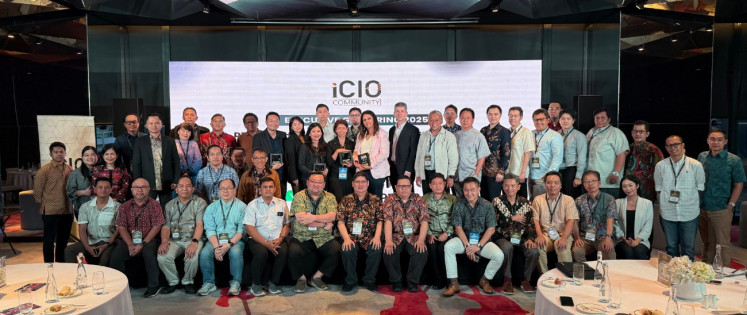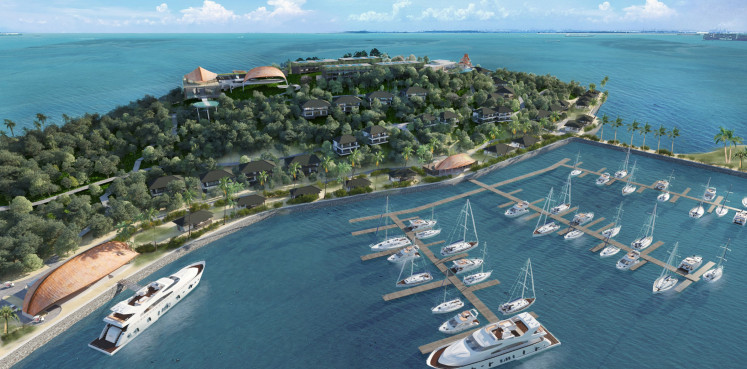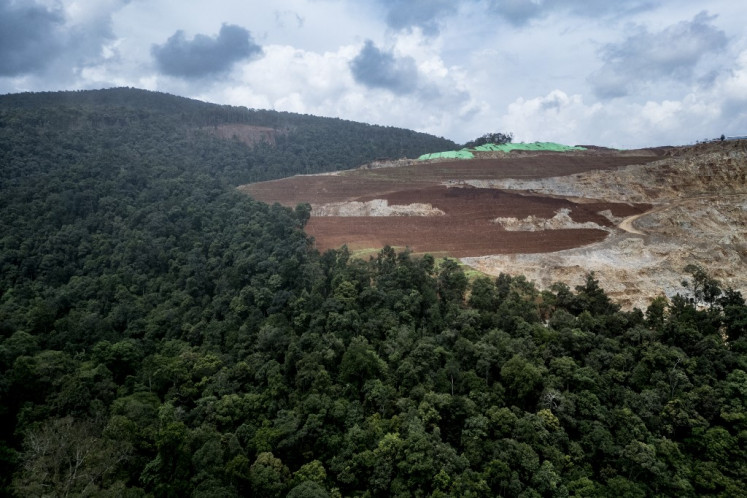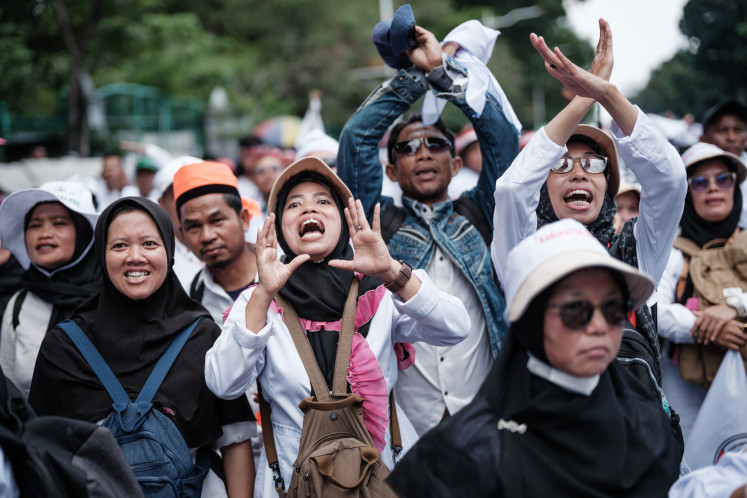Popular Reads
Top Results
Can't find what you're looking for?
View all search resultsPopular Reads
Top Results
Can't find what you're looking for?
View all search resultsHydrating peatlands key to bracing for El Niño’s impact
Change text size
Gift Premium Articles
to Anyone
T
he El Niño is a phenomenon of warming sea surface temperature above normal conditions that occurs in the central Pacific Ocean. Most recently, Indonesia has been experiencing a reduction of rainfall, making the impact even worse.
The dry weather can lead to even more devastating events, as locals may recall from 2015, when more than 2.5 million hectares of the country were affected by forest and land fires. Using the incident in 2015 as a learning opportunity, the government, through the Peat and Mangrove Restoration Agency (BRGM), is restoring damaged peatlands, which are vulnerable to forest and land fires.
Plans have been initiated in six different provinces to build canal blocks and back-fill existing ones to stop peatlands from drying out, which will lower their chances of catching fire. Dry peatlands are vulnerable to fire, and with every passing minute, the fire becomes harder to extinguish.
From 2017 to 2022, 7,775 canal blocks, 14,059 deep wells and more than 300 canal back-fills have been built. The aim is to ensure that water in the rainy season remains in dry, damaged peatlands. This way, the damaged peatland is able to continue its function and return to normal.
Furthermore, the government is also increasing efforts to cover peatlands with plants to avoid further damage and release of emissions from the areas. The BRGM also built drilled wells with the intention that during the dry season, these wells would be used to rewet dry peatlands and/or extinguish fires when necessary.
In collaboration with regional governments and local communities, the BRGM has successfully hydrated 834,000 hectares of damaged peatlands from 2017 through 2020, and another 514,000 ha in the year that followed.
Data from the Environment and Forestry Ministry states that the El Niño phenomenon in 2023 is much stronger than the dry season in 2019. However, the area of burned land and the distribution of hotspots is far below the 5,106 points in September 2019, where peatlands cover 12.19 percent. Meanwhile, the remaining 87.81 percent occurred on mineral soil.
So far, early warning and extinguishing carried out by the Environment and Forestry Ministry, the National Police, the Indonesian Military (TNI), the BNPB, local governments, the BPBD and Fire Care Communities are considered effective. People should remain hopeful that the system will continuously improve the country’s ability to weather El Niño.
Moreover, the BRGM has made early efforts to deal with the El Niño phenomenon to prevent peat fires. They have collaborated with the National Research and Innovation Agency (BRIN) to carry out weather modification techniques to create artificial rain, activated drilled wells to peatlands that are starting to dry out, maintained the function of the canal blocks, including working with the Peat Care Village community, and carried out patrols and early blackouts.
It is advised that the public should also be educated on how to manage peatlands in their area to ensure that no fire will start or be left unattended for too long. This is a government innovation to create a permanent solution to overcome peatland fires, which occur every year.
However, this effort will not be successful and comprehensive without the active collaboration of parties in the areas of the Peatland Hydrological Unit (PHU) that are regularly burned.










